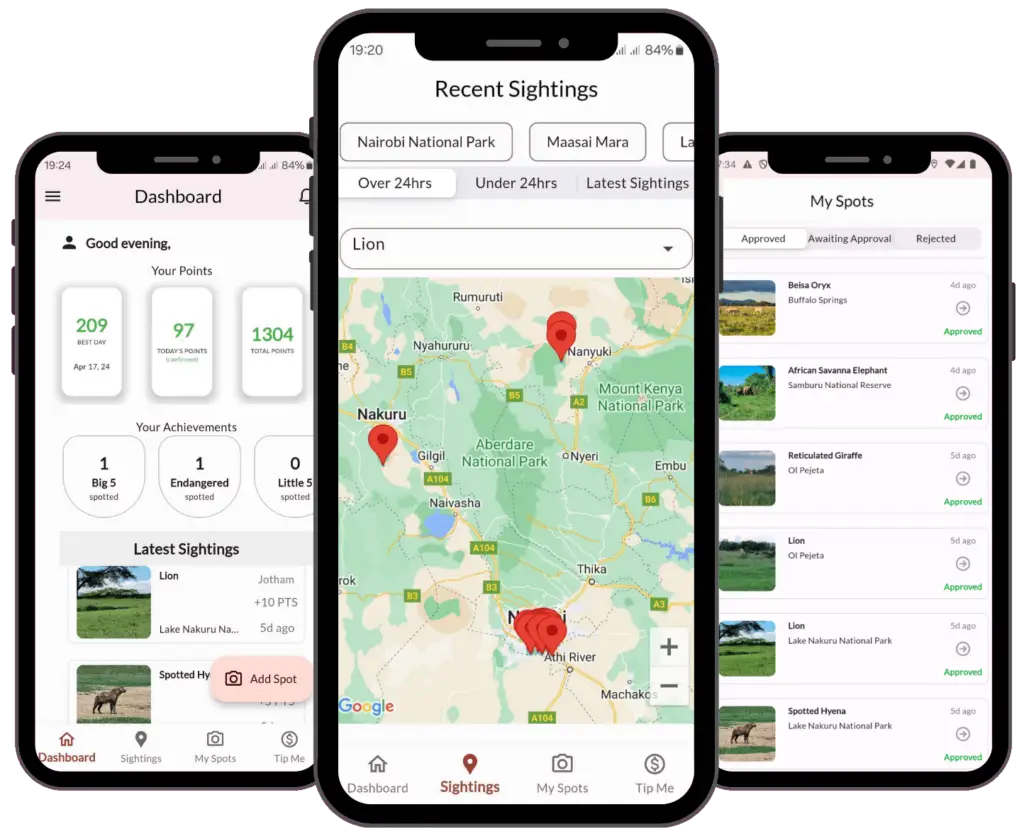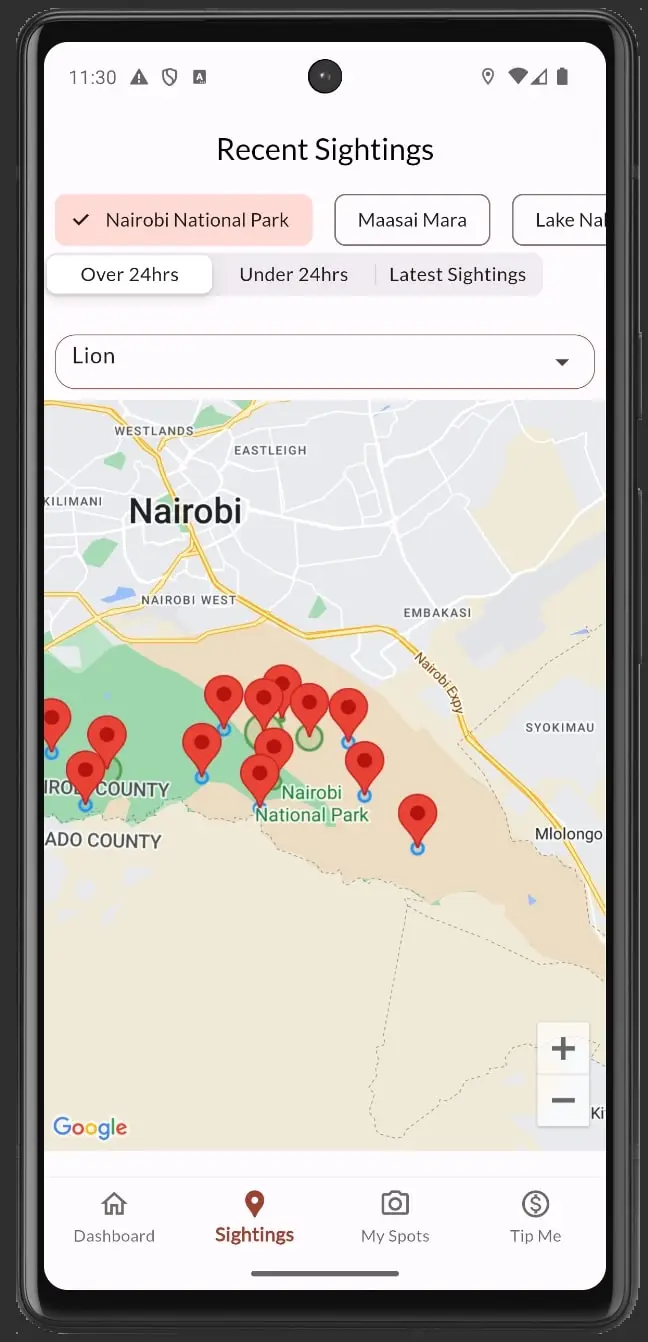
Kenya’s first platform built for safari tour drivers and guides.
Safari Driver helps you find animals in parks quickly and easily—saving you time and fuel while supporting conservation efforts.
Great at spotting wildlife? Earn rewards and incentives for finding and photographing animals!
Keep your wildlife knowledge edge with the NEW Animal Book—scroll down to explore!

Plan
See
Save
Earn
Conserve

Go to the recent sightings page, select a park, search for an animal that has been recently sighted
When you are in the recent sightings tab, you have three options for seeing animal locations. Over 24 hours is the default and shows you all animals seen past 24 hours, even when you are outside a park.
Under 24 hours shows you animals that have been spotted in the last 24 hours, you must be inside a park to access this tab.
In the event that no specific animal you have chosen has been spotted in the last 24 hours, you can choose latest sightings that will show you the last 5 sightings that are over 24 hours old. You must be inside a park to access the under 24 hrs and latest sightings options.
We show latest sightings to verified users and park visitors within the boundaries of national parks. You can, however, see all the animals using the over 24hrs option if you are outside the park.
When you find an animal in any of the recognised parks, click the “add spot” button, take a picture of the animal, fill in the details (how many and what they are doing) and submit. We will check your submission and once approved we will credit points to your account. You can redeem the points for cash via MPESA upon reaching a set milestone e.g. 500 points = 500 shillings
The short answer is yes. While generally Big Cats, Big 5 and endangered animals like wild dogs have the highest points, we tend to raise points for other highly sought after animals such as giraffes, zebra, grant gazelle etc. in certain parks. We also lower the points for easily found animals e.g Elephants in Amboseli
Very little. We have optimised the app to use very little data bundles. Across 4 parks in 5 days users could save over 125 spots (earning over 750 points) and only use 15mbs, equivalent to about 10 shillings.
No. GPS does not use any data bundles.
Dial *456*9*5*5*1# to enable receipt of the messages.
Once signed in, you can disable other senders by dialing *456*9*5#, however don’t disable SAFARI DRIVER or you will miss Special Offers!
We are very happy to hear from you. Our goal is to create an app that meets all the needs of safari tour drivers. Please write to us via support@safari-driver.com if you have a suggestion or face a problem with the app.

Have a technical issue with the app, please open a support ticket by writing to us on support@safari-driver.com and our engineers will look into the issue as quickly as possible.
Not a technical issue, please use the live chat during business hours 0900h – 1700h GMT+3.